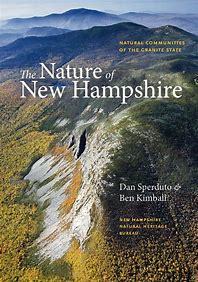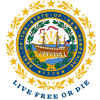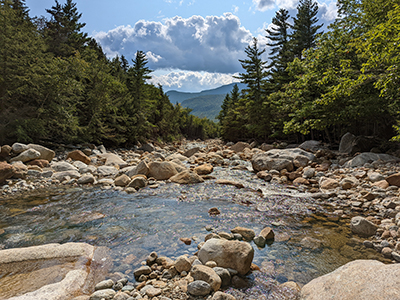Natural Communities
Information about what natural communities are, how and why they are classified and ranked, and what makes a natural community exemplary.
What are Natural Communities?
Natural communities are recurring assemblages of plants and animals found in particular physical environments. Communities range from common and widespread types that cover hundreds or thousands of acres across broad areas of the state, to uncommon or rare types that are small and restricted to a specific part of the state such as the White Mountains or Seacoast region.
Each natural community type occurs in specific settings in the landscape, such as wind-exposed rocky summits at high elevations, or muddy coastal river shores flooded daily by tides. Natural community types vary with changes in physical settings, resulting in predictable patterns across the landscape.
Particular associations of natural communities that repeatedly co-occur in the landscape form ecological systems.
What Are Exemplary Natural Communities?
The Natural Heritage Bureau gives conservation priority to "exemplary" natural communities. Communities earn this distinction one of two ways:
The natural community type is so rare that all examples are considered exemplary.
OR
Excellent examples of common natural community types.
These exceptional conditions are desirable because they are likely to support the greatest variety of native species and the ecological processes on which they depend. Exemplary natural communities represent many of the best remaining examples of New Hampshire flora, fauna, and underlying ecological processes.
The Bureau identifies and documents these exemplary communities to track their condition and inform the public of their conservation value.
What Are Ecological Systems?
To learn about ecological systems and how they are related to natural communities, visit our Ecological Systems Page.
How Are Natural Communities Classified?
Each community has a distinct set of environmental conditions that support certain species adapted to those conditions. The three primary characteristics that distinguish natural communities from one another are: plant species composition, vegetation structure (e.g., forest, shrubland, or marsh), and a specific combination of physical conditions (e.g., water, light, nutrient levels, and climate).
Natural community types are usually defined in terms of plants because they are relatively easy to study, often compose the physical structure to which most other living things respond and are sensitive indicators of physical and biological conditions in the environment.
Different communities may have considerable overlap in species composition and other characteristics, but each contains distinct and diagnostic combinations of species and physical characteristics. For example, the northern hardwood - spruce - fir forest natural community has considerably more red spruce in the overstory and is generally higher in elevation than the standard northern hardwood forest community (sugar maple - beech - yellow birch forest) despite the fact that many of the same species occur in both.
Why Do We Classify Natural Communities?
Classification of natural communities attempts to describe the variation and pattern in the landscape in a way that provides context and is easier to communicate to others. This classification strategy is a tool to help develop conservation and management strategies and protect biodiversity. Because plant communities often correspond closely to distinct assemblages of other types of organisms, natural communities can be used as “coarse filters” that “capture” many of the species and processes in the community even if they have not been specifically identified.
Below are the 5 main uses for classifying natural communities:
- Compare two areas to understand their similarities and differences.
- Determine if vegetation of an area is common or uncommon.
- Know if a specific community is a large or small example of its type.
- Identify the combination of circumstances that likely affect an organism's presence.
- Infer how management may influence species present.
How Are Natural Communities Ranked?
Rank codes describe the degree of risk to a natural community of elimination or extirpation throughout its range or within a state. Elimination risk indicates the likelihood that a community will be lost globally. Extirpation risk indicates the likelihood that a community will be lost at the state level but still exist elsewhere globally.
Visit the NatureServe website to learn more about global and state rankings.
Nature of NH
Check out the Nature of New Hampshire, an illuminating and instructive book that explores New Hampshire's stunning mosaic of natural communities. This book contains photos, drawings, and accessible text that takes you on a tour of the varied landscapes of New Hampshire. Readers will gain a new understanding and appreciation for the state's exceptional natural heritage.
Hampshire, an illuminating and instructive book that explores New Hampshire's stunning mosaic of natural communities. This book contains photos, drawings, and accessible text that takes you on a tour of the varied landscapes of New Hampshire. Readers will gain a new understanding and appreciation for the state's exceptional natural heritage.





